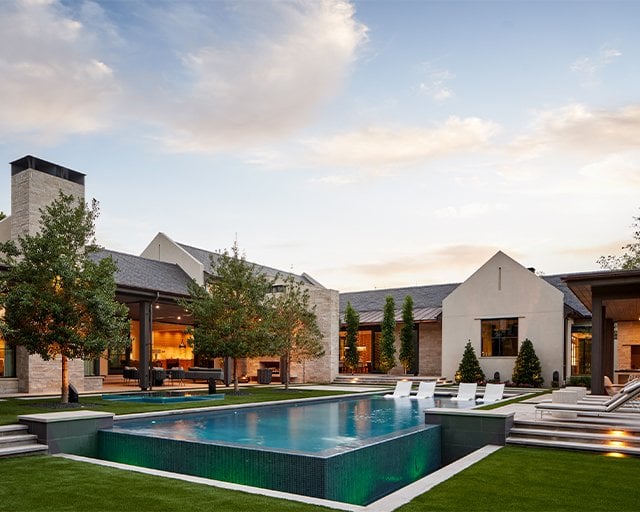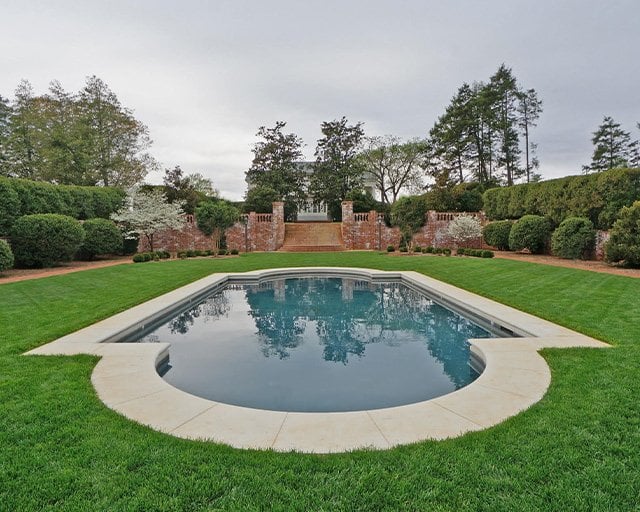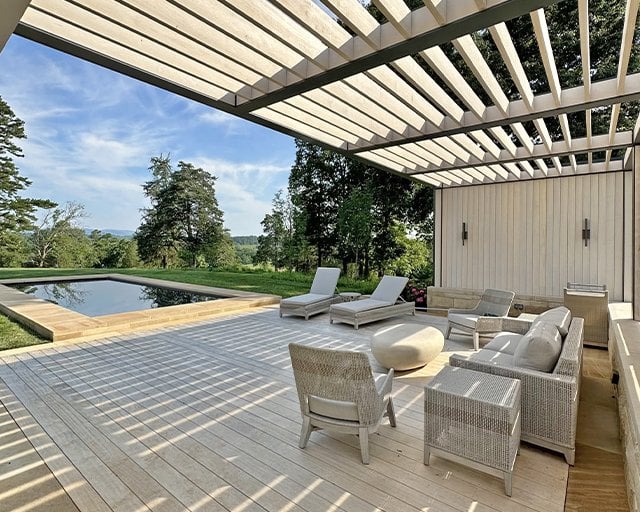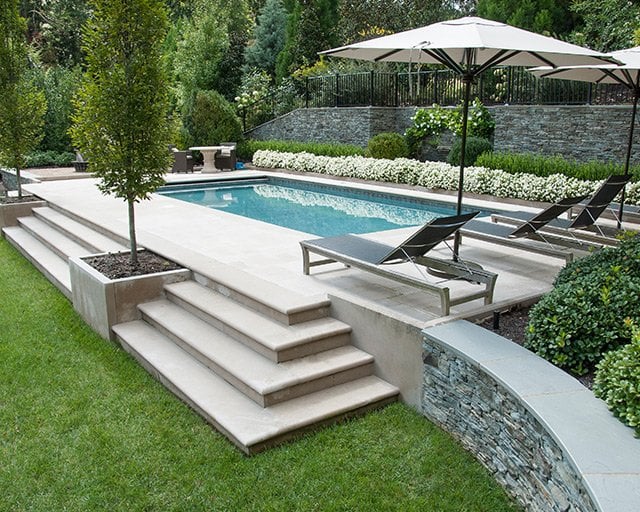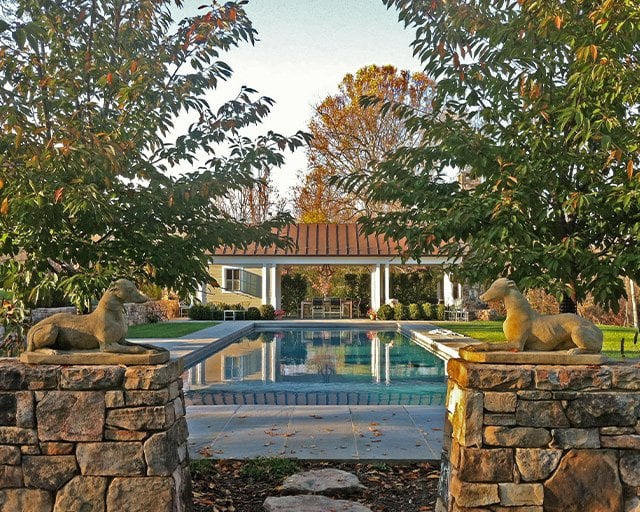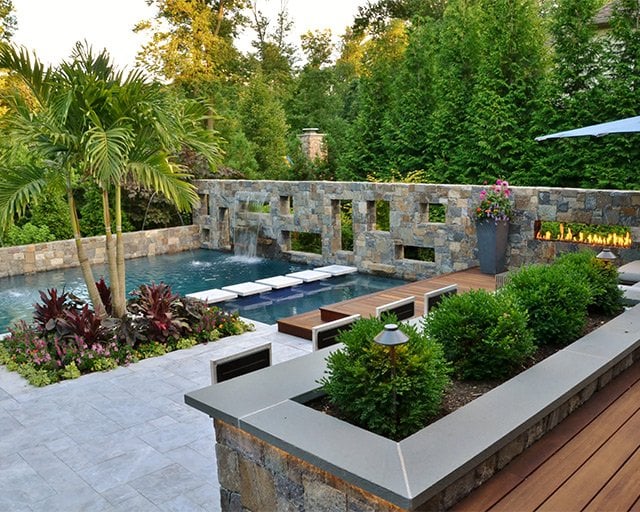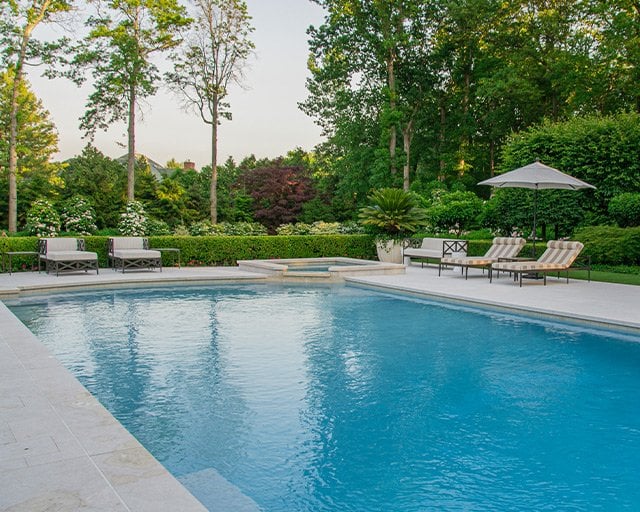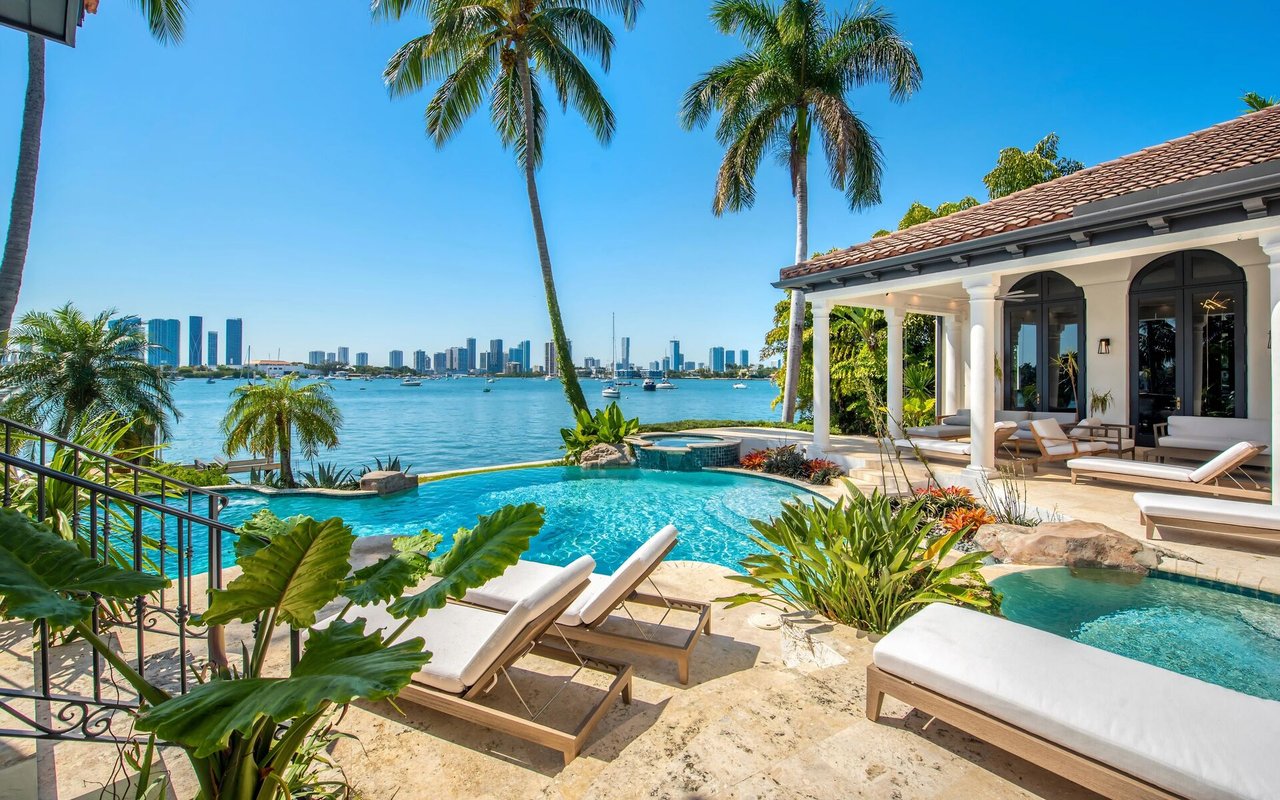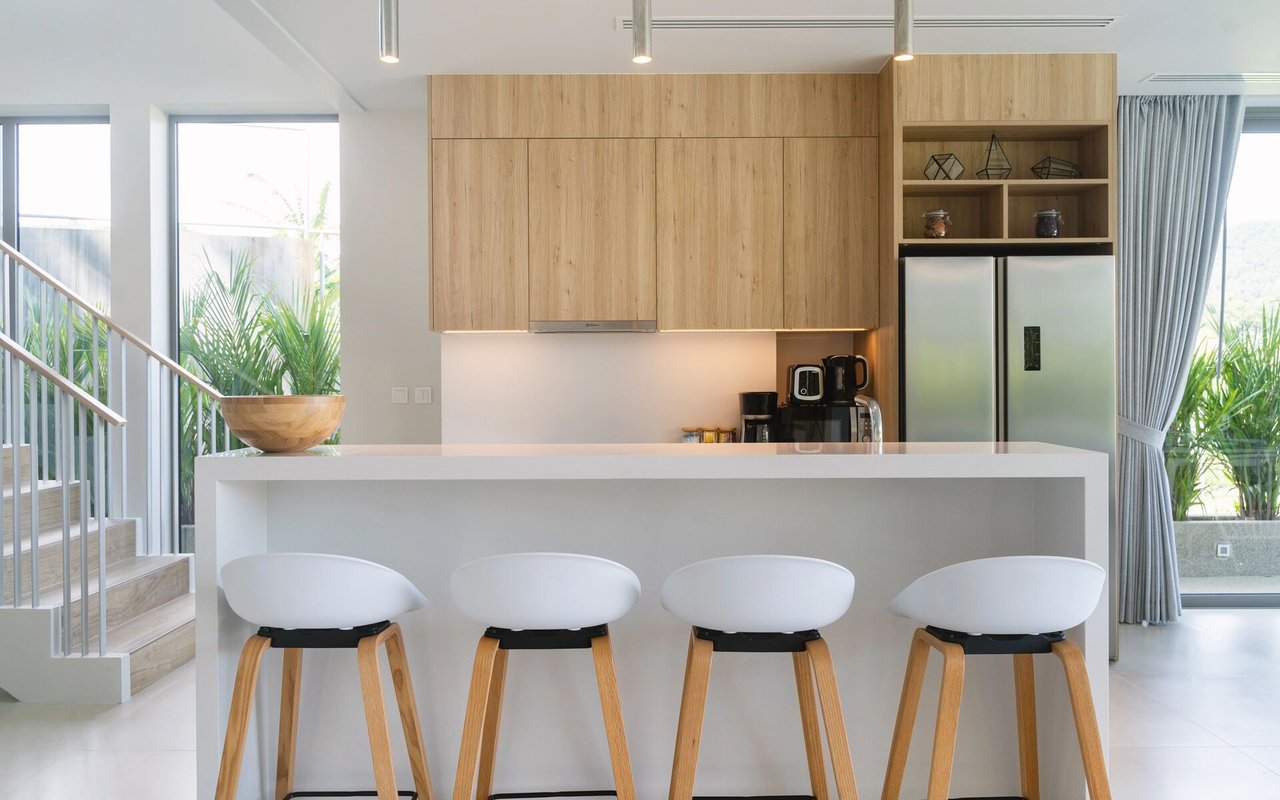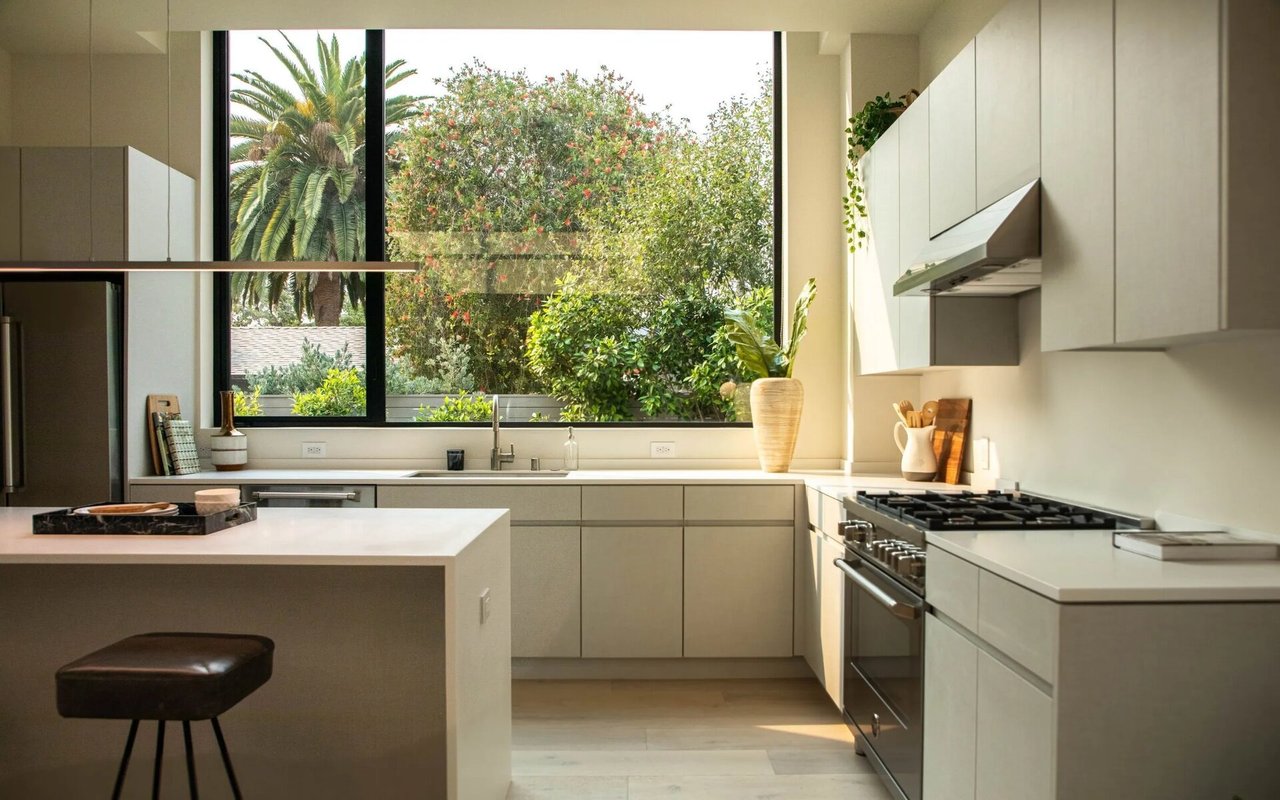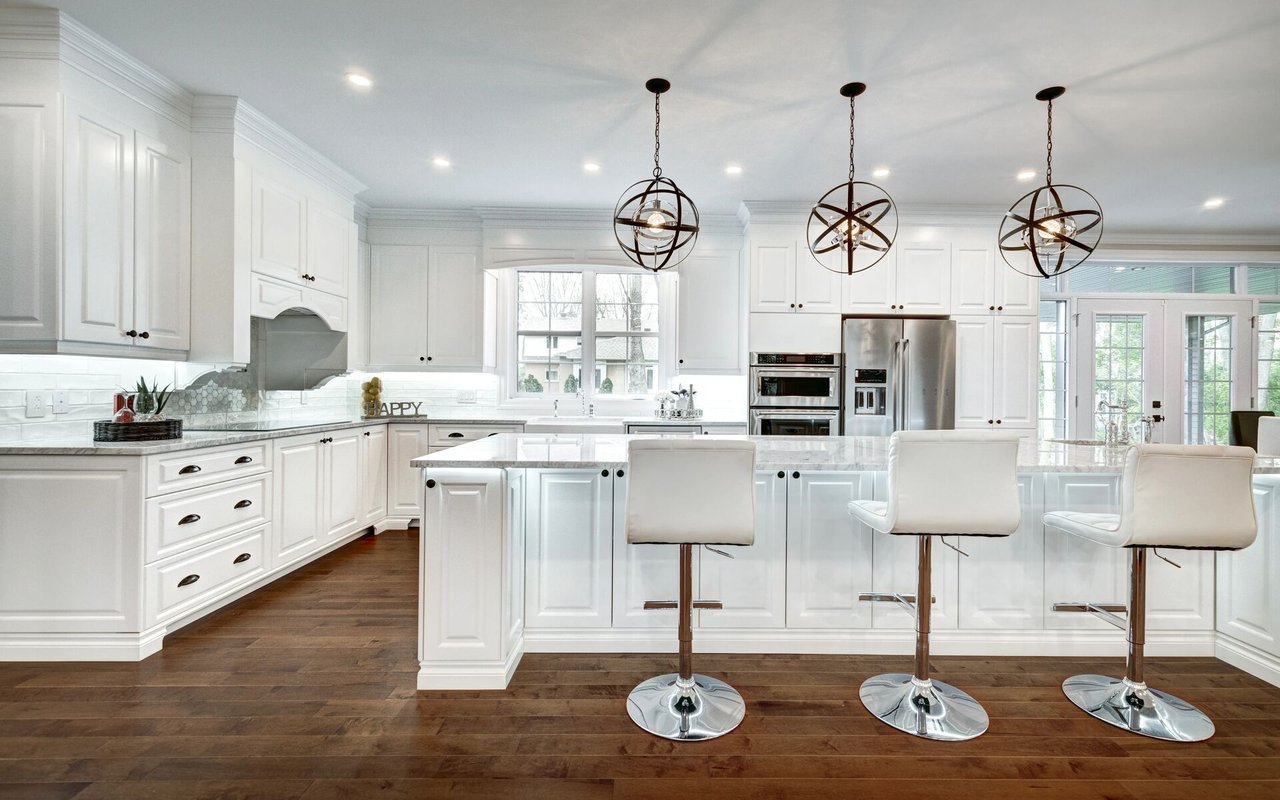Pool by Hedstrom Landscape Architecture. Photography by Beall and Thomas.
Courtesy of The Source Guide
If you're feeling the heat this summer and longing to cool off in your very own backyard oasis, you're not alone. We consulted four Scouted experts in the areas of pool design, build, and landscape architecture for their tips on what to consider before taking the plunge and bringing in the excavators. Guided by this advice, your 2024 summer is sure to make a big splash.
Pool by Jason Osterberger Designs. Photography by Jimi Smith Photography.
Contemplate the size and shape.
Begin your pool-building journey by envisioning what would work best in your yard. If space permits, Jason Osterberger, owner and principal designer at
Jason Osterberger Designs in Coppell, Texas, recommends building a pool that is at minimum 14' x 38'. This allows for an area for play, a tanning ledge, and a possible built-in spa. When it comes to shape, a rectangle is timeless option that commands attention, however, in the right setting with the right backdrop, a more organic shape can absolutely make sense. If you're tight on space, and desperate for a way to cool off, Sara Hedstrom Pinnell, founding principal of
Hedstrom Landscape Architecture in Knoxville, Tennessee, notes that smaller plunge pools are trending. A choice she's also seeing when families don't want to give up valuable, recreational yard space.
Pool by Jason Osterberger Designs. Photography by Nathan Schroder.
Consider a tanning ledge.
Trends will come and go, but right now tanning ledges, otherwise known as a wet deck or Baja shelf, are not only practical, but essential, according to Pinnell. This shallow shelf is popular for lounging, but it's also the perfect spot for smaller children to play. She likes to embed a shade umbrella directly into the shelf, so you can enjoy shade and the cool water.
Pool by Sutphin Architecture. Photography courtesy of Sutphin Architecture.
Hire certified professionals.
Know that not all contractors are alike. Mitch Knapp, president and owner of
Scenic Landscaping in Haskell, New Jersey, notes the importance of hiring master certified pool builders when possible, who have the proper schooling and education, as well as solid experience and a good reputation. It can also save money in the long run if you go with a firm such as Scenic Landscaping, that has an in-house design and build team. "These types of firms help to streamline the process from day one through completion, covering everything from the permit process to the design, construction through maintenance," he says. And if you're interested in adding an outdoor kitchen, pergola, fire pit, and more, they can help with that, too.
Pool by Sutphin Architecture. Photography by Sutphin Architecture.
Location. Location. Location.
This is quite possibly one of the most important factors to consider when putting in a pool. Adams Sutphin, owner of
Sutphin Architecture in Charlottesville, Virginia, notes that where you place your pool, especially if you have more than one possible site, should be carefully evaluated. "The further you are from the main house, the more amenities you may need. It's important to consider bathroom access, refrigeration, even access to towels and laundry," he says. "A 'destination' pool can be a wonderful getaway, but plan on building a pool house to give you easy access to everything you may need."
Pool by Jason Osterberger Designs. Photography by Jimi Smith Photography.
Establish a proper budget.
When planning to add a pool, it's important to think of all of the ancillary costs involved. "Many homeowners don't always consider the adjunct expenses," Knapp says. The pool construction process will include fencing, permit and engineering, and the involvement of an electrician and plumber. Additionally, going forward you will need to budget for water and maintenance.
Pool by Hedstrom Landscape Architecture. Photography by Patrice Argant.
Determine how you want to use your pool.
This is the element that will inform all other decisions, so it's wise to lead your process with this. Osterberger asks all clients, "Do you want to play in the pool or dive in the pool?" He explains that a play pool is more on trend nowadays and will last for many different seasons of life. "A family with young children will be able to have a shallower area to stand and play, young kids can still jump in on the deeper side, and teenagers and adults have the opportunity to play sports and float around," Osterberger explains. "A dive pool will shorten your shallow end, leaving you with a largely deep pool that you cannot stand in."
Pool by Sutphin Architecture. Photography courtesy of Sutphin Architecture.
Work with a landscape architect.
For the most cohesive—and beautiful—pool plan, Sutphin recommends working in collaboration with a landscape architect. As you design and plan, they can play a pivotal role in the overall surroundings, from materials to ambiance, and not to be forgotten, maintenance! Sutphin notes that there are definitely some types of trees you want nowhere near a pool, and only a professional will be able to offer you the best guidance in this area.
Pool by Scenic Landscaping. Photography by Heather Knapp.
Think about seating.
Of course, the pool matters, but much of the time spent at your pool will be enjoyed poolside, instead of in the actual water. That's why Pinnell considers the experience for those on the pool deck. She ensures that the location of the seating area not only capitalizes on possible views, but that it also allows for sun if there's a lounging area. Finally, she designs the deck size to accommodate circulation, furniture, and the addition of decorative pots. "It's really important for the deck to be designed with furniture in mind," Pinnell shares. "We always do a furniture layout so that the pool deck area can fit everything needed for a sunny, poolside summer."
Pool by Scenic Landscaping. Photography by Heather Knapp.
Take a holistic approach.
It's important to note that when putting in a pool, there's more to consider than just the pool. Knapp encourages homeowners to think about decking and hardscaping—and all the details therein— that will complement the pool. "Make sure the stone you choose is cool on your feet—my first choice would always be to use lighter colors and sand-blasted marbles," he says. Pinnell likes to mix pool deck materials. "In a free-form pool, we mix a rock salt concrete finish with wood decking to give the appearance of a dock on a lake, with the added bonus of breaking up the mass of the large pool," she shares. "On another project, we mixed natural stone with synthetic turf. It's a great look for a reasonable cost with zero maintenance."
Pool by Scenic Landscaping. Photography by Heather Knapp.
Heat things up.
Hot tubs, otherwise known as spas, fell out of fashion for a while, but they're back, and according to Osterberger, they can act as a water feature for your pool. One of the most recent trends he's seeing is a raised spa that offers a lovely waterfall effect into the main pool. Additionally, the spa can offer a design element with the installation of beautiful tile.


